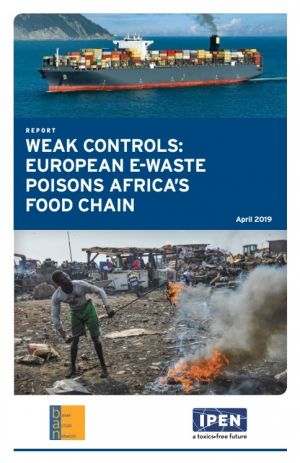New study carried out by IPEN and Basel Action Network (BAN) reveal how weak controls in international treaties allow export to e-waste developing countries, leading to dangerous levels of POPs exposure and resulting in food chain contamination. Download the full report below...
Introduction
Over 40,000,000 tons of toxic waste from discarded electronics (e-waste) is created each year with an annual growth rate of 4-5%. Meanwhile, there is a lack of efficient, safe and sustainable infrastructure for its disposal in the regions of the world where the majority of the exported e-waste stream is destined to end up. A typical place in Africa where e-waste has been received and recycled in an informative setting is the large scrap yard in Agbogbloshie, near the center of Accra, Ghana.
One of the most dangerous aspects of e-waste is due to the fact that it contains chemicals known as persistent organic pollutants (POPs). Chemicals defined as POPs are the world's most toxic and persistent chemicals. They are found in e-waste and can also be generated at high levels when e-waste is burned as is often the case in developing countries.
New studies by IPEN and Basel Action Network (BAN) have revealed how weak controls have been exported to waste electronic equipment from developed countries to dangerous levels of human exposure and food chain contamination in African countries.
2 types of controls that need to be strengthened are: 1) hazardous waste limits for toxic substances in the Stockholm Convention; and 2) greater control over e-waste export in the Basel Convention for exports for alleged recycling and repair.
![]()







